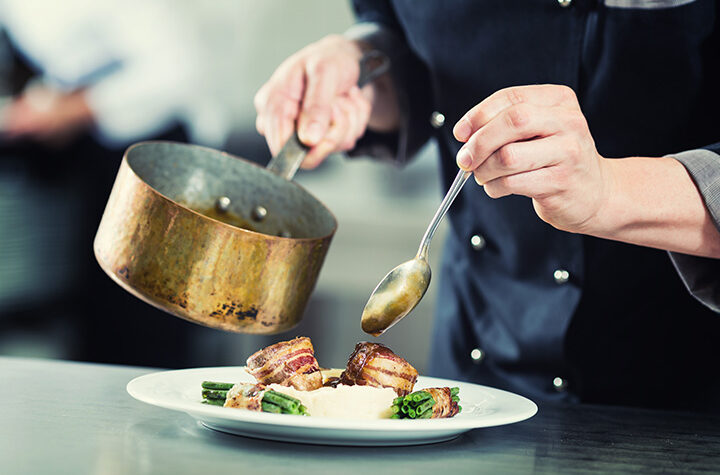There is a lot of mystique that swirls around using and making French Sauces. Hoitytoity French culinary schools like Le Cordon Bleu or US-based ones like Escofifier do battle over these sauces because French Sauces are the basis of many other sauces we use. It is to their benefit to keep the mystique going. The point of this article is to demystify these sauces and help you learn how and when to use them.
French sauces complement your food as well as impress your family or guests but they really are not that difficult to make. This article explores the range French sauces which fall into four basic categories: espagnole, velouté, bechamel, and hollandaise. These are called mother sauces. There are secondary or sometimes called compound sauces that are extensions of, or are-based on these mother sauces. We’ve also added a few other important sauces that don’t fall neatly into these categories.
The aim of a sauce is to take a dish from ho-hum to exceptional. The role of a sauce is to enhance flavor of your food. Sauces add layers of flavor and complexity to titillate your tastebuds. Sauces also add moistness, color to a dish as well as additional textures to please your palate. A sauce my be a complement or offer a contrasting taste.
Every regional cuisine has its own variety of sauces but the French have been the pioneers. The British have gravy and bread sauces. The Chinese have soy sauce, oyster and chili sauces. The Indians have tamarind sauce. The Japanese have teriyaki sauce and the Swede’s have their meatball sauce.
Here are the four main mother sauces:
- Espagnole – these are brown sauces
- Velouté – these are white sauces
- Bechamel – are milk and cream-based sauces
- Hollandaise – butter-based sauces that typically use yolks for emulsification
- Tomato – most of these sauces use tomato paste as a base
Let’s begin demystify many of the most basic French sauces.
Espagnole Sauce
Veloute Sauce
Bechamel Sauce
Hollandaise Sauce (and red sauce)

